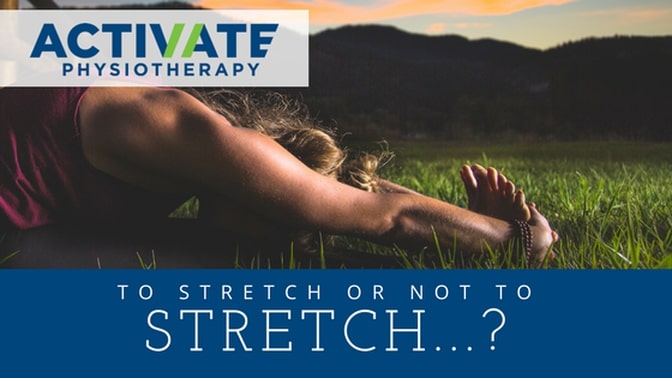Stretching has long been the traditional warm-up and cool-down for many exercise participants at both elite and social levels. However, the question has been asked: “Does stretching really help?” Most health and fitness professionals would certainly agree that stretching should be included in preparation for and recovery from athletic activity, however some experts disagree. Earlier this month professor Rob Herbert, a senior researcher from Neuroscience Research Australia (NeuRA) was interviewed by the ABC, stating his interpretation of the available evidence suggests there is not a lot of evidence supporting stretching as an effective method of reducing injury risk.
Professor Herbert’s review of 16 clinical trials examining the effect of stretching on reducing injury, concluded stretching does little to reduce injury or muscle soreness.
“Hallelujah!” we here some of you cry, but before you give up stretching for good you should consider some of the following:
What is a tight muscle really?
A more accurate description for tight muscles is a “stiff muscle.” Stiff muscles are those that are more resistant to being lengthened. Common causes of muscle stiffness include but not limited to:
Muscle trauma (strain or tear)
Repetitive microtrauma or overuse (eg. Delayed onset muscle soreness)
Neurological (eg. Stroke or Cerebral Palsy)
Using this thinking process the act of “stretching” is less about actually making muscles longer, and more about reducing their resistance to being placed in a lengthened position. This may explain why people do become more flexible with stretching regimes or activities such as yoga.
Injury risk is more complex than “tight muscles”
While a muscle that is already stiff may be more likely to be injured or contribute to injury we argue that overall injury risk is far more complex.
injuries during physical (and normal daily) activities occur because of a variety of reasons many of which are totally irrespective of whether a participant has stretched prior to or on the completion of the activity. For example a football player can do little in the way of warm up, to avoid a collision that results in a tear of their knee ligaments. Similarly a basketball player may strain a previously loose and limber calf muscle toward the end of the game due to fatigue.
The type of stretching is important
Stretching is typically described as holding a mildly uncomfortable position for 30+ seconds. This type of stretching is static stretching. Most health and fitness professionals would now agree that warm up and cool downs should include a more dynamic form of stretching.
Dynamic stretching is about preparing your body to perform physical activity. You should include a range of movements that replicate different parts of the activity you’re going to begin. For example standing leg swings, walking lunges or walking with high knees can all be used prior to walking or running based activities. You should try not to rush your warm up. Even if your arrive late to your running club, walking for the first 5-minutes can be an effective way to prepare your body to break into a jog or run and catch up with the rest of your crew.
if you’re someone who can’t stand the idea of stretching and warming up, guided activities like Clinical Pilates or yoga can be a great alternative to help you reduce muscle stiffness.
A quick stretch or warm up isn’t the answer
If you already feel like you have an area that is a bit tight or stiff, performing a few stretches 5-minutes before you exercise isn’t going to be the magic cure. You need to look at why your body is particularly stiff.
Is it just this muscle or group of muscles?
Is it worse on one side compared with another?
Do some activities make it worse or better?
All of these questions and more are worth being considered when you see a health professional for your tight or stiff muscles. Don’t worry we won’t think you’re a whinger, we’re glad to see you taking care of yourself before injury occurs!

